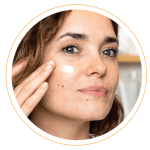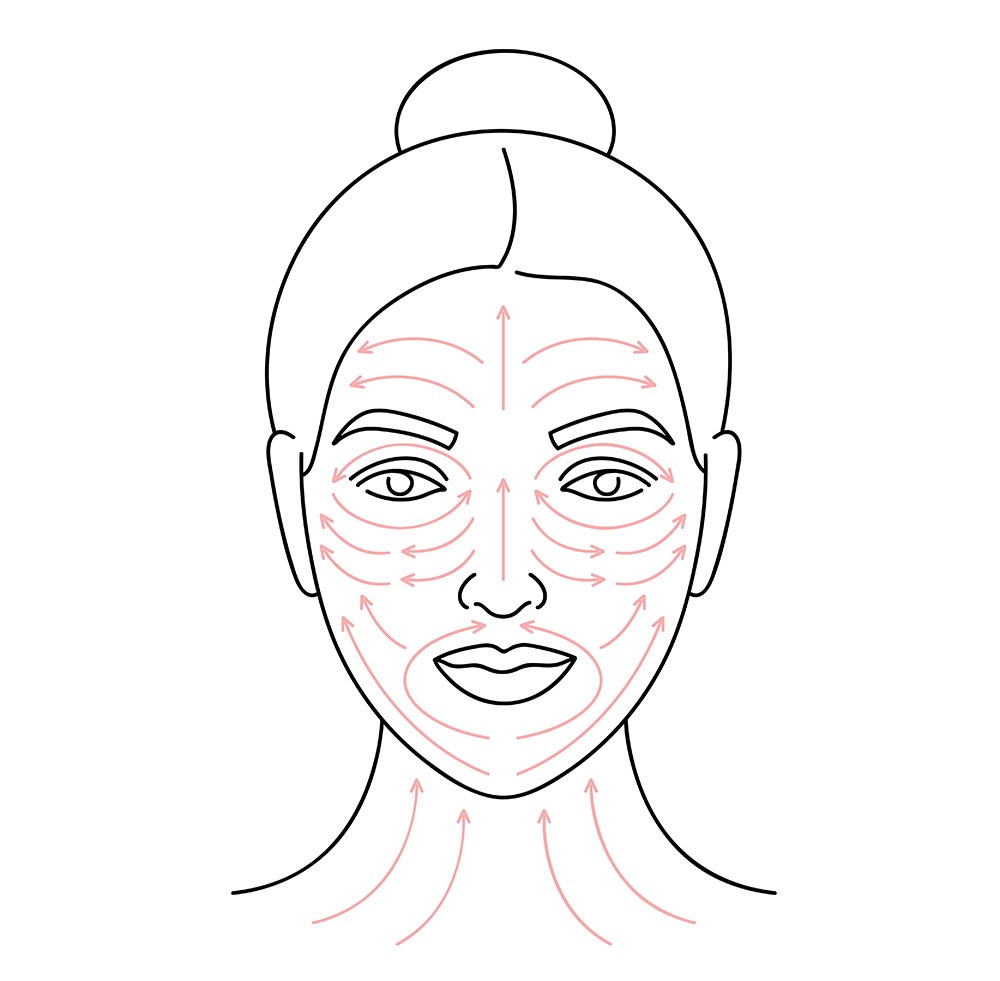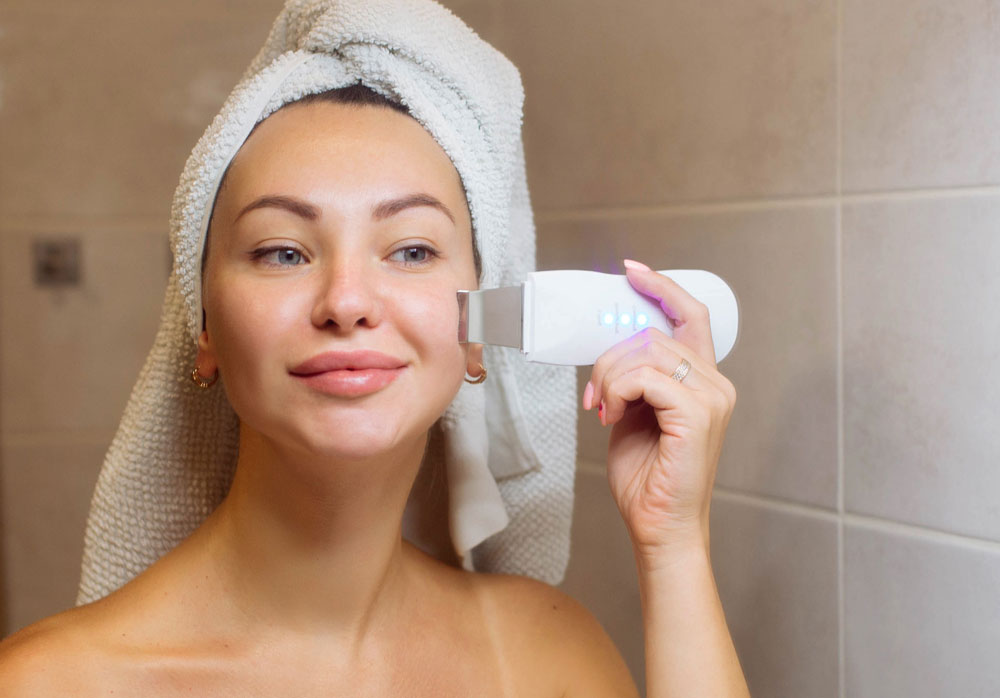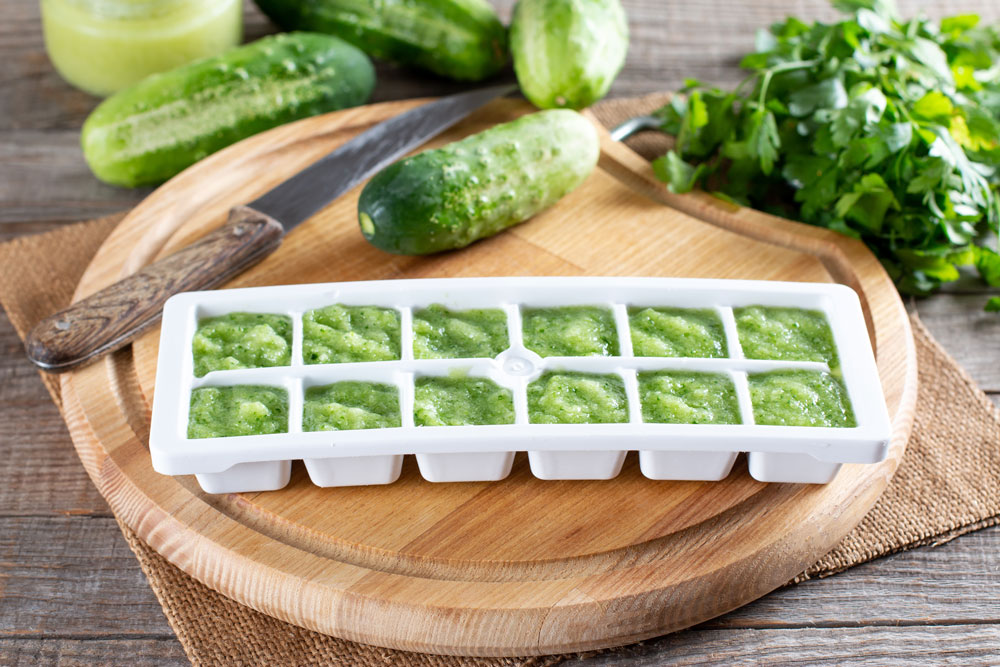Glow Big or Go Home Antioxidant Packed Smoothie
This smoothie not only contains an astounding amount of some of the best whole food sources of antioxidants but tastes like a decadent dessert. (Go on, have it for breakfast, we won’t judge).
My name is Liz, and I created your optimized skincare routine and plan. I focused on your high and medium priorities based on your DNA test. I also considered your Yudoyu quiz results which told us about your skin type and feelings about your skin. Your personalized routine includes products packed with ingredients that, with consistent use, will improve current skin quality and protect your future face. Please add lifestyle and dietary changes (outlined below) for an added boost toward happier, healthier skin!
Warmly,
Liz and The Yudoyu Team
We are here to help if you have any questions! Email us at hello@yudoyu.com.M

Combination + Sensitive + Over 50
We added Skin Sensitivity and Wrinkling to your online shopping experience
DNA ANALYSIS EXPLANATIONS
Our lab tests 16 core and dozens of secondary genetic markers that contribute to skin protection and premature aging and can play a big role in your skin’s future well-being.
The genes tested are cataloged according to their structural, functional, and metabolic effects on the skin.
Each Skin DNA category provides 1 of 3 outcomes: High Risk, Medium or Low Risk.
How does your skin compare with the rest of the population?
Yudoyu’s partner lab SkinDNA® has established one of the world’s largest derma genetics databases with more than 2 million DNA profiles*.
Our data allows us to discover distinctive skin traits shared between groups of people.
Gene performance is rated as either normal, impaired, or deficient. Remember, your DNA is only a part of your skin equation, and we can help you on YOUR path to healthier, happier skin.
You produce close to normal collagen levels to counteract the breakdown process.
Your body breaks down collagen at a faster rate than it creates it.
COLLAGEN BREAKDOWN: Normal – The enzyme responsible for Collagen Breakdown functions optimally.
COLLAGEN BREAKDOWN: Impaired – You may break down collagen faster than it is produced and be prone to skin laxity and looseness.
COLLAGEN BREAKDOWN: Deficient – The enzyme responsible for Collagen Breakdown is heightened. You may break down collagen faster than it is produced and be prone to skin laxity and looseness.
COLLAGEN PROTECTION: Normal – Your body produces the antioxidant responsible for protecting collagen at an optimal level.
COLLAGEN PROTECTION: Impaired – The Antioxidant Glutathione responsible for Collagen Protection functions less than ideal.
COLLAGEN PROTECTION: Deficient – The Antioxidant Glutathione responsible for Collagen Protection functions minimally.
Your body has an ideal ability to break down glucose. Excess glucose has been linked to a number of age-related traits, amongst them – wrinkles.
Your body has a reduced ability to break down glucose. Excess glucose has been linked to several age-related traits, including wrinkles.
WRINKLE FACTOR: Normal – Your body can break down wrinkle-causing glucose efficiently.
WRINKLE FACTOR: Impaired – You have a less-than-optimal ability to break down glucose efficiently. Excess glucose molecules stick to collagen and elastin, binding fibers together, leading to wrinkles, thinning skin, and structural skin damage.
WRINKLE FACTOR: Deficient – You have a minimal ability to break down glucose efficiently. Excess glucose molecules stick to collagen and elastin, binding fibers together, leading to wrinkles, thinning skin, and structural skin damage.

You probably do not experience irregular pigmentation, sunburning, patches of redness, broken capillaries, brown spots, or expression lines.
You may experience some irregular pigmentation, sunburning, patches of redness, broken capillaries, brown spots, and expression lines.
You may have a higher probability of irregular pigmentation, sunburning, patches of redness, broken capillaries, brown spots, and expression lines.
GENES TESTED:
MELANIN 1: Normal – Your skin optimally provides the melanin needed to protect you for short intervals of sunlight exposure.
MELANIN 1: Impaired – Your body is prone to some irregular melanin production, causing sensitivity to sunlight.
MELANIN 1: Deficient – Your body produces irregular volumes of melanin (pigment). As a result, your skin is sensitive when exposed to sunlight.
MELANIN 2: Normal – You tend to tan. However, prolonged exposure can still cause sensitivity, freckling & pigmentation with minimal sunburning symptoms.
MELANIN 2: Impaired – You might experience freckling, other pigmentation spots, and/or white spots. If tan, it may look uneven.
MELANIN 2: Deficient – You are more prone to freckling, hyperpigmentation, and white spots (hypo-pigmentation). Your skin is likely to burn rather than tan.
PHOTO DEFENSE: Normal – Your body is near optimal at defending against UVB rays. The “Burning Rays” are responsible for sunburns and pigment responses.
PHOTO DEFENSE: Impaired – Your body is functioning less than optimal in breaking down free radicals produced from UVB rays. These “Burning” Rays are responsible for sunburns and pigmentation responses.
PHOTO DEFENSE: Deficient – Your body minimally breaks down free radicals produced from UVB (Burning) Rays once they have entered the skin. These rays are responsible not only for sunburns but also for pigmentation responses.
UV RADIATION REPAIR: Normal – Your genes are excellent at repairing your skin from damage caused by UVA Radiation (also known as the “Aging Rays”).
UV RADIATION REPAIR: Impaired – Your result suggests you may not adequately repair DNA damage caused by UVA radiation exposure (known as the “Aging” Rays).
UV RADIATION REPAIR: Deficient – Your result suggests you are not adequately repairing DNA damage caused by UVA radiation exposure (known as the “Aging” Rays).
UV RADICAL REPAIR: Normal – You have optimal UV Radical repairing ability. This gene is crucial for maintaining the skin’s overall health by aiding the body in repairing UV radical damage.
UV RADICAL REPAIR: Impaired – You have less than optimal ability to break down UV Radicals produced by sun exposure. This gene is crucial for maintaining the skin’s overall health by aiding the body in repairing UV radical damage.
UV RADICAL REPAIR: Deficient – Your genetics minimally repair damage from Free Radicals produced by the sun and UVA exposure. This gene is crucial for maintaining the skin’s overall health by aiding the body in repairing UV radical damage.
Your body has an optimal ability to produce essential antioxidants.
Your body has a less-than-optimal ability to produce essential antioxidants.
Your body has a minimal ability to produce essential antioxidants.
GENES TESTED:
ANTIOXIDANT PRODUCTION: Normal – Your genes are great at producing the body’s TWO most crucial antioxidants. You are less prone to the destructive effects of free radicals.
ANTIOXIDANT PRODUCTION: Impaired – You have less than the optimal ability to produce TWO crucial antioxidants. This may make you more prone to rough texture and dull, uneven skin tone.
ANTIOXIDANT PRODUCTION: Deficient – You have a low ability to produce the body’s TWO most crucial antioxidants. This can cause rough texture and dull, uneven skin tone.
POLLUTION DEFENSE: Normal – Your genes can efficiently break down pollutants that can break down the skin’s cellular wall, such as car exhaust, carbon, and smoke.
POLLUTION DEFENSE: Impaired – Your body may not effectively break down fumes, carbon, and smoke. This may cause your skin to become more sensitive to environmental pollutants.
POLLUTION DEFENSE: Deficient – Your body does not effectively break down fumes, carbon, and smoke. This may cause your skin to become more sensitive to environmental pollutants.
Your results indicate that you have near-normal risk factors for chemical sensitivity and skin inflammation.
Your results indicate that you have a risk factor for chemical sensitivity and skin inflammation.
Your results indicate that you have multiple high-risk factors for chemical sensitivity and skin inflammation.
GENES TESTED:
INFLAMMATION: Normal – Your body responds normally to everyday irritants.
INFLAMMATION: Impaired – Your body may occasionally over-respond to perceived threats, irritating skin cells and causing itching, redness, skin sensitivity, hay fever, or other allergies.
INFLAMMATION: Deficient – Your body is prone to over-respond to perceived threats, creating a response that irritates skin cells. You likely experience itching, redness, or skin sensitivity. You may also experience hay fever and other allergies.
DETOX: Normal – Your body can break down xenobiotic compounds such as cigarette smoke, exhaust fumes, air pollution, and alcohol.
DETOX: Impaired – Your body does not break down xenobiotic compounds such as cigarette smoke, exhaust fumes, air pollution, and alcohol as well as it should. Variations in this gene can create internal inflammation, causing redness, rashes, and acne.
DETOX: Deficient – Your body minimally breaks down xenobiotic compounds like cigarette smoke, exhaust fumes, or air pollution. Variations in this gene can create internal inflammatory responses, causing redness, rashes, and acne.
SKIN SENSITIVITY: Normal – Your body has an optimal ability to break down toxic chemical compounds in everyday pollution. Likely, you do not suffer inflammation or irritations caused by perfumed products, active skincare ingredients, and general city pollution.
SKIN SENSITIVITY: Impaired – You may be moderately sensitive to skin contact from perfumed products, active skincare ingredients, and general city pollution. Spot-test products with active ingredients to make sure you can tolerate the ingredients.
SKIN SENSITIVITY: Deficient – You are probably very sensitive to skin contact from perfumed products, active skincare ingredients, and general city pollution. Spot-test products with active ingredients to make sure you can tolerate the ingredients.
…based on your results.**
Want to start smaller? Look for the * next to “add to cart” for your best beginner products.
Remember to use a broad-spectrum SPF daily (rain or shine). You’ll find more great choices and add-ons in your “just for YU shop.”
Here is your personalized skincare plan based on your results!**
Add these easy-to-do lifestyle habits to your daily routine.
Look for these topical ingredients when shopping for skincare.
Please consult your doctor before you begin a new dietary plan.
These minimally-invasive professional treatments will benefit your skin’s texture and make you glow!
Want to dig deeper? Learn about the causes and symptoms of poor skin health, and view our comprehensive list of beneficial ingredients and advice.
Selected for you!
 Lymphatic drainage is a facial massage to boost the body’s natural draining system. The face is left visibly more lifted, firm, and youthful by assisting in the movement of excess toxins, water, fats, and proteins down the lymph vessels and into the nodes!
Lymphatic drainage is a facial massage to boost the body’s natural draining system. The face is left visibly more lifted, firm, and youthful by assisting in the movement of excess toxins, water, fats, and proteins down the lymph vessels and into the nodes!
Step 1: Apply treatment oil or cleansing balm of choice. Fingers should not drag but glide easily over the skin with little to no resistance.
Step 2: Follow the directional guide demonstrated in the illustration. Using light pressure, gently massage the face upwards and outwardly. Pressure should be not unlike moving a pen across a table. The key is to lift and relax muscles! If redness occurs, lighten the pressure.
Step 3: Finish with a glass of water, herbal tea, or warm broth for added hydration.
What if I’m doing this wrong?
If you are working in upward and outward motions with light, relaxing amounts of pressure, you are certain to fight against one of the main causes of wrinkles – gravity.

Facial Rollers: Face rolling can stimulate your lymphatic system and blood flow.
Gua Sha: This traditional Chinese healing technique incorporates scraping, rubbing, and massaging motions to improve circulation and lymphatic drainage giving a lifted look to the skin.
Cupping: The suction created by the cups can help stimulate collagen and elastin, plumping and tightening your skin and helping with lymphatic drainage to reduce puffiness.
Facial Steamers: Steaming can make skin look firmer because it increases circulation. This boost of blood flow nourishes the skin and delivers oxygen, resulting in a natural, healthy glow. It releases acne-causing bacteria and cells.
Laser: At-home skin lasers can rejuvenate and reduce wrinkles, pigmentation, redness, blemishes, and scarring.
Ultrasonic Scrubber: Uses ultrasound waves to speed up the natural exfoliation process.
Microdermabrasion: Keep skin glowing by gently lifting dead, dull skin cells from the outermost skin layer.
Radio Frequency: This should help skin feel firmer and tighter after the four-week mark.
High-Frequency Wand: Helps to reduce skin inflammation and the appearance of wrinkles and fine lines.
Red Light / Light Therapy: Red light therapy, specifically, has the potential to assist in helping blemishes, reducing inflammation, decreasing healing time after certain procedures, and general skin rejuvenation.

Ice Cubes: Freeze some slices of cucumber, or make your own custom spa water cubes with green tea, whole-leaf aloe juice, and cucumber. Once frozen, glides cubes across the face, focusing on any especially irritated or red areas of the face.
Facial Rollers: (store in the freezer or plunge in ice water before using) Face rolling can stimulate your lymphatic system and blood flow.
Gua Sha: This traditional Chinese healing technique incorporates scraping, rubbing, and massaging motions to improve circulation and lymphatic drainage giving a lifted look to the skin. Try storing your gua sha tools in the fridge or plunging in ice water before using them for more anti-inflammatory benefits.
Red Light / Light Therapy: Red light therapy, specifically, has the potential to assist in helping blemishes, reducing inflammation, decreasing healing time after certain procedures, and general skin rejuvenation.
Facial Steamers: Steaming can make skin look firmer because it increases circulation. This boost of blood flow nourishes the skin and delivers oxygen, resulting in a natural, healthy glow. It releases acne-causing bacteria and cells.
** This advice is intended for education and aesthetic purposes only. If you have undiagnosed inflammation or blemishes that won’t heal, please consult a medical doctor. If you have been diagnosed with acne, rosacea, eczema, or another skin disease, please check with your healthcare provider before changing your skincare plan.
This smoothie not only contains an astounding amount of some of the best whole food sources of antioxidants but tastes like a decadent dessert. (Go on, have it for breakfast, we won’t judge).
Here is one of our favorite shortcuts to having both bone broth and soup, without having to make both separately. Did we also mention how delicious it is?
Roasted bell peppers and tomatoes are two of the top ten foods highest in Vitamin C, making this hummus a super-charged source and convenient snack for any time!
This firming, nourishing, best-thing-since-sliced-bread recipe is not only delicious, but easy to make, and extremely affordable.
† Watch for the symbol: These products and ingredients may contain high amounts of iodine. See the iodine warning below before using.
Thyroid Disease Warnings: If you, or someone in your family, are prone to or suspect you might have thyroid disease, we recommend avoiding the use of all of the following ingredients in both skincare and supplements unless otherwise instructed by your healthcare provider:
These ingredients are enormously high in iodine content, a proven, major thyroid disruptor. When applied topically, they can enter the bloodstream.
Resources: https://www.drchristianson.com/the-iodine-controversy/